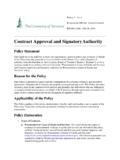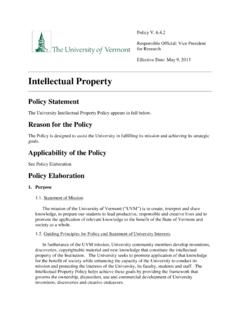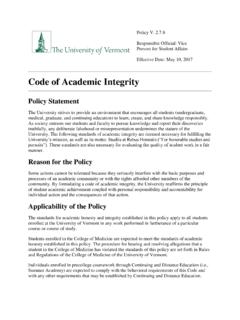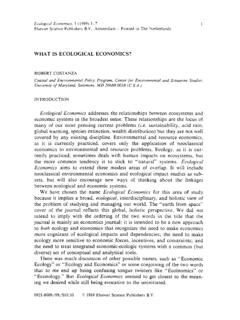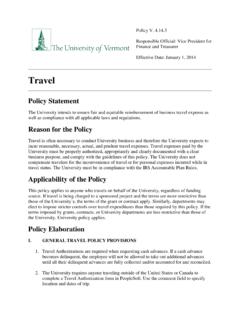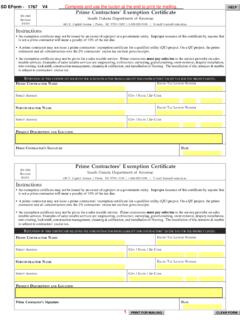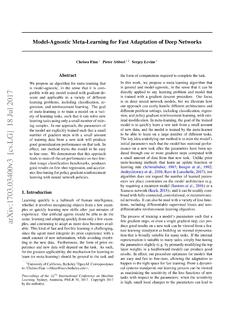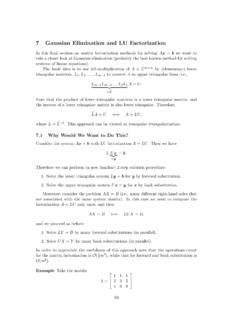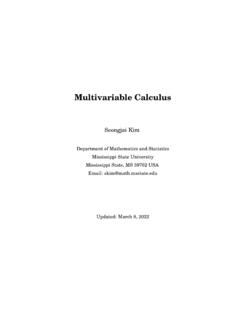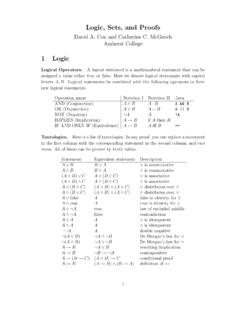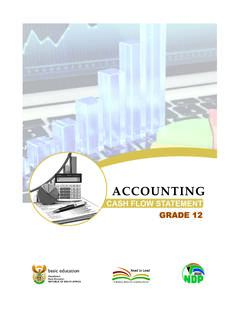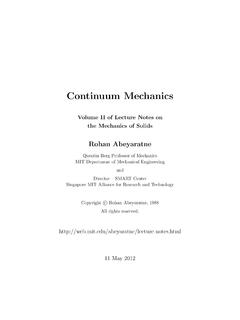Transcription of PHYSICS Projectile Motion
1 Investigation ManualPHYSICSP rojectile Motion Made ADA compliant by NetCentric Technologies using the CommonLook softwareKeyPersonal protective equipment (PPE)gogglesglovesapronfollow link to videophotograph results and submitstopwatch requiredwarning corrosion flammable toxic environment health hazardPROJECTILE MOTIONO verview In this investigation, students study Projectile Motion by exploring two-dimensional Motion and how vectors are used to describe the trajectory of an object. They will observe the Motion of an object launched horizontally at various speeds and will learn how to predict the Motion of the launched object by combining their prior knowledge of kinematics with new knowledge of vectors and the trajectory of Describe what factors affect the trajectory of a Projectile . Explain how vectors are used to describe two-dimensional andprojectile Motion . Predict the trajectory of a horizontally launched Projectile usingvectors and kinematic RequirementsPreparation.
2 15 minutes Activity 1: Launching a Projectile in a Horizontal Direction .. 30 minutes 2 Carolina Distance LearningTable of Contents2 Overview 2 Outcomes2 Time Requirements3 Background6 Materials7 Safety7 Technology8 Preparation9 Activity 110 Disposal and Cleanup10 ObservationsBackgroundProjectiles are objects that are given an initial velocity and subsequently travel along their trajectory (flight path) due to their own inertia. In sports, a Projectile is a basketball that has been thrown through a hoop, a pitched baseball, or a golf ball that has been hit by a golf club. At a circus, a clown launched from a cannon or a trapeze artist soaring through the air are exam-ples of Projectile Motion . Vectors describe the velocity, acceleration, and forces that act upon a Projectile in terms of direction and magnitude. The principles of vector addition are used to understand and predict the trajectory of projectiles as well as other applications of two-dimensional Motion , such as circular Motion or the elliptical orbits of planets and comets.
3 Therefore, vector addition is an important subject in the field of mechan-ics a branch of PHYSICS that studies how phys-ical bodies behave when subjected to forces or displacements. To understand the Motion of a Projectile , you need to know the initial parameters. You can perform many calculations on a Projectile s trajectory to find things such as maximum height, the time of flight, and the range (hori-zontal distance) the object will travel. For example, a ball thrown with less force has a lower speed and hits the ground sooner and nearer than the same ball thrown with greater force. However, the angle at which the ball is thrown also affects the trajectory of the ball. Which matters more: the initial speed or the release angle? What happens when a ball is thrown at a high speed but at a shallow angle? Will it travel farther than a ball traveling at a low speed at a greater angle? The answers to these questions can all be calculated by applying kinematic equations and some knowledge about tend to follow a parabolic trajectory.
4 If you draw a line that follows the movement of a ball after you throw it, you would see the shape of a parabola. The shape of the parabola depends on the initial speed and the release angle, but all projectiles launched at an angle follow this parabolic curve (see Figure 1).Figure understand the Motion of a Projectile , it helps to consider the object as moving in two dimen-sions: the vertical (y) direction and the horizontal (x) direction. The velocity of the Projectile at any given time can be broken down or resolved into a vector in the x direction and a vector in the y direction. The magnitudes of these vectors are independent of one another. Gravity only affects the vertical component of the velocity, not the horizontal on next 3 Projectile MOTIONB ackground continuedConsider Figure 1. When the Projectile is launched, the velocity, v, consists of two inde-pendent, perpendicular components: vx and vy. If air resistance is negligible, the horizontal component of the velocity (vx) remains constant, whereas the vertical component of the velocity (vy) changes due to gravitational acceleration.
5 The initial value for vy decreases as the Projectile travels to the highest point in the parabolic arc and then increases in the opposite direction as the Projectile descends. If air resistance is negli-gible, the vertical velocity of the Projectile when it returns to the elevation from which it was launched will have the same magnitude as when the Projectile was launched, but the direction will have turned 180 .Consider two projectiles launched horizontally at exactly the same time and from the same height, but one Projectile has an initial velocity that is twice the other Projectile . If the ground beneath the projectiles is level and air resistance is ignored, both projectiles will land on the ground at the same time. This may seem counterintuitive, because the Projectile with the greater speed is traveling farther. But experimentation proves that the time of flight of both projectiles will be the same and that both projectiles will land at the same time.
6 The Projectile with the greater velocity will land farther and its parabolic trajectory will be different, but the time for the two projectiles to reach the ground will be the air resistance is taken into account, the mathematics describing the Motion of projectiles can be challenging, but in many cases the air resistance is negligible and can be ignored. If air resistance is ignored, the Motion of a Projectile can be described by kinematic equations. The Motion in the horizontal direction is constant and can be described with this simple equation:where vx is the magnitude of the horizontal component of the Projectile s velocity x is the horizontal displacement that the object travels t is the timeAlthough the Projectile s velocity in the hori-zontal direction is constant, its velocity in the y direction is constantly being accelerated by gravity at a rate of g = a Projectile is fired at an angle of 0 from the horizontal ( , in the x direction), the time for the Projectile to fall to the ground depends only on the initial height and the acceleration due to gravity.
7 The time is independent of the horizontal Motion of the Projectile in the y direction, which is affected due to the acceleration of gravity, can be described by these kinematic equations: where y is the displacement of the Projectile in the y directioncontinued on next page4 Carolina Distance Learning a is the acceleration in the y direction, which in this context is equal to the acceleration due to gravity, g = m/s2 vy2 is the velocity of the object in the y direction at time t2 vy1 is the velocity in the y direction at time t1 t is the time of flight between t1 and t2 Because the magnitudes of perpendicular vectors are independent of each other, you can calculate the time that a Projectile travels by considering only the vertical component of the velocity. Once you know the time of flight for the Projectile , calculate the horizontal distance that the object travels by multiplying this time by the horizontal speed of the Activity 1, you will predict and then measure the horizontal distance of a Projectile launched from an elevated position with an initial velocity 5that has only a horizontal component.
8 To measure the horizontal distance that the projec-tile travels, you will need to know the horizontal speed of the Projectile and the time that the Projectile is in the Projectile in this activity is the metal sphere from the conceptual PHYSICS mechanics module kit. The sphere will roll down an incline using the angle bar as a track, then transition to a grooved ruler so that it travels horizontally when it leaves the table. You will apply your knowledge of kine-matics to determine the velocity of the sphere as it leaves the the sphere has no vertical velocity as it leaves the table, you will determine the time for the sphere to reach the ground by the height of the table and the acceleration due to gravity (g = m/s2). Projectile MOTION6 Carolina Distance LearningMaterialsIncluded in the conceptual PHYSICS mechanics module kitAcrylic sphereAngle barMetal sphereClayWasherProtractorStringYellow grooved rulerTape measureNeeded from the central materials set:Needed but not supplied: Book Masking tape Calculator Table (or other level surface) Digital device capable of recording videos (optional)Reorder Information: Replacement supplies for the Projectile Motion investigation (Conceptual PHYSICS Mechanics Module kit, item number 580404) can be ordered from Carolina Biological Supply : to 7 SafetySafety goggles should be worn at all times during this activity, which involves the movement and acceleration of objects.
9 Take care during the execution of this activity to avoid all the instructions for this investigation before beginning. Follow the instructions closely, and observe established safety practices, including the use of appropriate personal protec-tive not eat, drink, or chew gum while performing this activity. Wash your hands with soap and water before and after performing the activity. Clean the work area with soap and water after completing the investigation. Keep pets and chil-dren away from lab materials and Methods for Collecting Data Using Digital Devices Much of the uncertainty in PHYSICS experi-ments arises from human reaction time error in measuring the times of events. Some of the time intervals are very short, which increases the effect of human error due to reaction time. Observing the experiment from a good vantage point that removes parallax errors and recording measurements for multiple trials helps to mini-mize error; using a digital device as an alternate method of data collection may further minimize error.
10 Many digital devices, such as smart-phones and tablets, have cameras and software that allow the user to pause or slow down the video. If you film the activity against a scale such as a tape measure, you can use your video playback program to record position and time data. This can provide more accurate data and may eliminate the need for multiple the time on your device s playback program is not sufficiently accurate, you may download an app such as the following free apps: Hudl T echnique iOS and Android ( ) SloPr oiOS ( )Android ( )Or you may upload the video to your computer. Your operating system or software suite may include video playback programs, or these programs may be available for download. Projectile MOTION8 Carolina Distance Learning6. Tape the ruler to the table to secure it, placing the tape behind the point where the angle bar rests on the ruler so that the tape does not interfere with the sphere as it On the edge of the table just below the end of the ruler, tape a piece of string so the string hangs vertically from the table.

